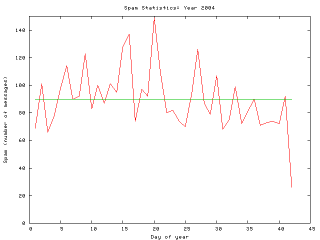What is "spam"?
Spam is unsolicited "junk" e-mail sent to large numbers of people to promote products or services. Sexually explicit unsolicited e-mail is called "porn spam." Spam also refers to inappropriate promotional or commercial postings to discussion groups or bulletin boards."
We don't like spam and we know you don't either. Spam is wasteful of resources, time, and most of all, patience.
How do you protect me from "spam"?
Our redundant mail systems scan through each incoming and outgoing mail multiple times, to ensure that it is not carrying any malicious viruses or malware, and that the content is not of a spam or "bulk-advertisement" nature.
To do this, we use the latest in anti-spam tools and methodologies. We strongly believe in Open Source and Free Software as a way to ensure that no viruses or spam gets into your mailboxes or sent along to your users and customers by using tools with publically available source code. This ensures that the code can be audited and checked for the latest features and functionality, and that we always remain ahead of the spammers and virus authors.
We use tools that "self-learn", and get better at finding and detecting spam as time goes on. Incoming spam decreased in 2004, as our tools get "smarter".

When we receive spam, it is checked and tested, and used to make our anti-spam filters smarter. The more spam we receive, the less spam you see, because the filters "learn" as they process more mail. You can see this learning trend in the live graph below, the number of incoming spam messages per day is slowly decreasing, as our self-learning filters get smarter and smarter at dealing with them.
None of these spam messages ended up in a user's mailbox. They were all caught and quarantined in a separate folder before they were delivered to any human user.
